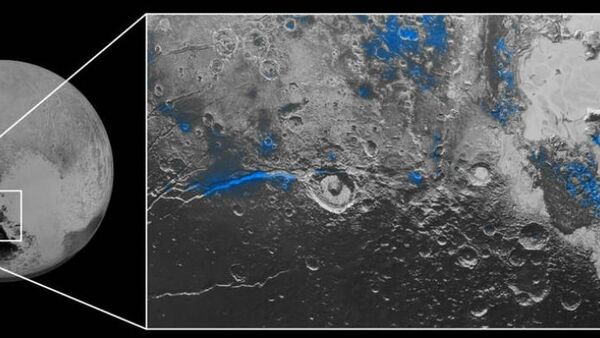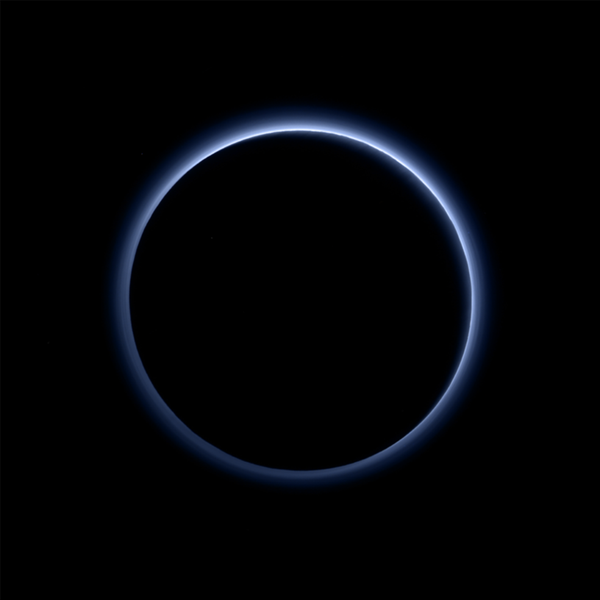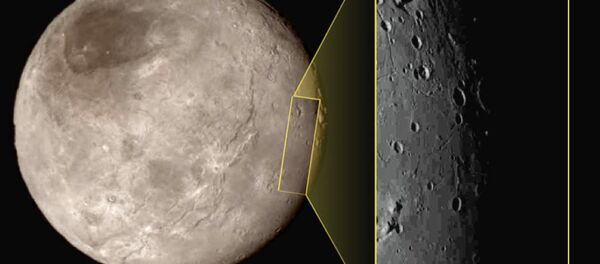“Who would have expected a blue sky in the Kuiper Belt? It’s gorgeous,” remarked Alan Stern, NASA New Horizons principal investigator from the Southwest Research Institute in Boulder, Colorado.
“The striking blue tint tells us about the size and composition of the haze particles,” said new Horizons team researcher Carly Howett. “A blue sky often results from scattering of sunlight by very small particles. On Earth, those particles are very tiny nitrogen molecules. On Pluto they appear to be larger — but still relatively small — soot-like particles we call tholins.”
New Horizons also discovered many small regions of water ice, via the Ralph spectral composition mapper.
“Large expanses of Pluto don’t show exposed water ice,” said science team member Jason Cook, of SwRI, “because it’s apparently masked by other, more volatile ices across most of the planet. Understanding why water appears exactly where it does, and not in other places, is a challenge that we are digging into.”
The photos show that the water ice seems to manifest around craters, crevasses and mountainous regions.
“I’m surprised that this water ice is so red,” says Silvia Protopapa, a science team member from the University of Maryland, College Park. “We don’t yet understand the relationship between water ice and the reddish tholin colorants on Pluto's surface.”





